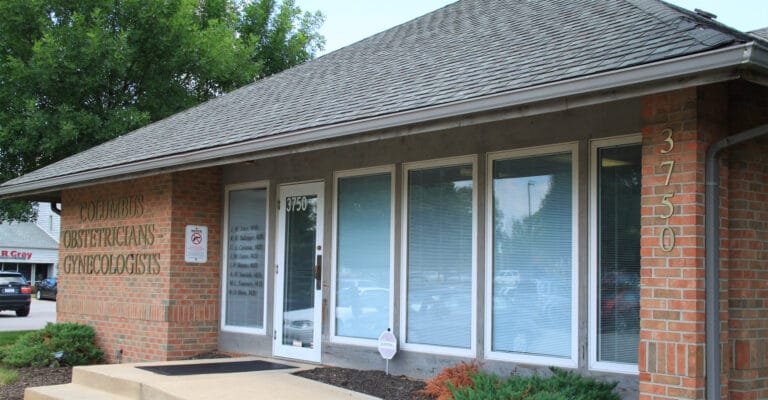
Pelvic support problems can significantly impact your quality of life, causing discomfort and affecting daily activities. These issues arise when the muscles and tissues that hold the pelvic organs in place become weakened or damaged.
This guide provides clear, actionable information on how to identify and manage pelvic support problems, helping you take control of your pelvic health.
What Are Pelvic Support Problems?
Pelvic health is crucial for maintaining overall well-being. A strong and functional pelvic floor supports vital organs, helps control bladder and bowel movements, and contributes to sexual health.
The pelvic floor is a network of muscles, ligaments, and connective tissues located at the base of the pelvis. This “hammock” structure supports the pelvic organs, including the bladder, uterus, rectum, and small intestine.
When these muscles and tissues are strong and functioning properly, they keep the pelvic organs in place and ensure proper functioning. However, when they weaken or are damaged, it can result in various pelvic support problems, necessitating medical attention and management.
Causes and Risk Factors
Pelvic support problems can arise due to various factors that weaken or damage the pelvic floor muscles and connective tissues. Recognizing these causes and risk factors can aid in prevention and early intervention.
Pregnancy and Childbirth
Pregnancy and childbirth are significant risk factors for pelvic support problems. The strain of vaginal delivery can lead to potential damage, especially with the use of forceps or vacuum assistance. Multiple pregnancies can also contribute to cumulative stress on the pelvic floor, increasing the likelihood of these issues.
Aging and Menopause
Hormonal changes during menopause can weaken pelvic tissues, making them more susceptible to prolapse and incontinence. Natural aging processes also lead to the weakening of muscles, including those in the pelvic floor, reducing their ability to support pelvic organs effectively.
Lifestyle Factors
Several lifestyle factors can increase the risk of pelvic support problems:
- Obesity and Weight Gain: Excess weight puts additional pressure on the pelvic floor.
- Chronic Coughing or Straining: Conditions like chronic bronchitis or constipation, which cause frequent straining, can weaken pelvic floor muscles over time.
- Heavy Lifting and High-Impact Activities: Repeated heavy lifting or high-impact sports can strain the pelvic floor.
Genetic Predisposition
A family history of pelvic support problems can increase an individual’s risk due to inherited weaknesses in connective tissues. Conditions that affect the body’s connective tissues, such as Ehlers-Danlos syndrome, can also predispose individuals to these problems.
Symptoms of Pelvic Support Problems
If you experience any of these symptoms, it is important to consult with a healthcare provider to determine the best course of action for treatment and management.
Physical Symptoms
- Pelvic Pressure or Heaviness: A common symptom is a feeling of pressure or heaviness in the pelvic area, often described as a dragging sensation.
- Visible Bulge in the Vaginal Area: In cases of severe prolapse, a bulge or lump may be visible or palpable in the vaginal area, indicating that an organ has descended.
- Difficulty with Urination or Bowel Movements: Problems such as urinary retention, frequent urination, constipation, or incomplete bowel movements can indicate pelvic support issues.
Functional Symptoms
- Urinary Incontinence: Involuntary leakage of urine, particularly during activities that increase abdominal pressure like coughing, sneezing, or exercising.
- Fecal Incontinence: Inability to control bowel movements, leading to accidental leakage of stool.
- Sexual Dysfunction: Pain during intercourse (dyspareunia), reduced sensation, or difficulty with sexual function can be associated with pelvic floor disorders.
Types of Pelvic Support Problems
Each type requires specific management and treatment approaches to improve the individual’s quality of life and overall pelvic health. Knowing these types of pelvic support problems is essential for identifying symptoms early and seeking appropriate medical intervention.
Pelvic Organ Prolapse
Pelvic organ prolapse occurs when one or more of the pelvic organs descend from their normal position due to weakened support structures. There are several types of prolapse:
- Uterine Prolapse: This happens when the uterus slips down into or protrudes out of the vaginal canal.
- Cystocele (Bladder Prolapse): This occurs when the bladder drops into the vaginal space, often leading to urinary issues.
- Rectocele (Rectal Prolapse): This involves the rectum bulging into the vagina, which can cause difficulty with bowel movements.
- Enterocele (Small Bowel Prolapse): This type involves the small intestine pushing into the vaginal area, typically after a hysterectomy.
Urinary Incontinence
Urinary incontinence is the loss of bladder control, leading to unintentional urine leakage. It can be classified into several types:
- Stress Incontinence: Leakage occurs during physical activities that put pressure on the bladder, such as coughing, sneezing, or lifting heavy objects.
- Urge Incontinence: A sudden, intense urge to urinate followed by involuntary leakage. It is often associated with overactive bladder syndrome.
- Mixed Incontinence: A combination of both stress and urge incontinence symptoms.
Fecal Incontinence
Fecal incontinence is the inability to control bowel movements, resulting in involuntary excretion of stool. This condition can be caused by damage to the pelvic floor muscles, nerves, or both, and it significantly impacts the quality of life.
- Physical Symptoms
- Pelvic pressure or heaviness
- Visible bulge in the vaginal area
- Difficulty with urination or bowel movements
- Functional Symptoms
- Urinary incontinence
- Fecal incontinence
- Sexual dysfunction
Diagnosis of Pelvic Support Problems
Accurate diagnosis is crucial for developing an effective treatment plan tailored to the individual’s specific condition. Early detection and intervention significantly improve outcomes and quality of life for those experiencing pelvic support problems.
Medical History Review
- Symptom Discussion: The healthcare provider will ask detailed questions about your symptoms, including their onset, frequency, and severity. This helps in understanding the impact of the symptoms on your daily life.
- Personal and Family History: Information about any previous pregnancies, childbirth experiences, surgeries, and family history of pelvic support problems can provide insights into potential risk factors.
Physical Examination
- Pelvic Exam: A pelvic examination is conducted to assess the strength and integrity of the pelvic floor muscles and tissues. The provider may ask you to perform certain actions, such as coughing or bearing down, to observe any signs of prolapse.
- Strength Testing of Pelvic Muscles: The healthcare provider may evaluate the strength of your pelvic floor muscles by having you contract them. This can help determine if muscle weakness is contributing to your symptoms.
Diagnostic Tests
- Ultrasound: Imaging tests like ultrasound can provide detailed pictures of the pelvic organs and help identify any abnormalities or prolapse.
- MRI: Magnetic Resonance Imaging (MRI) offers a more comprehensive view of the pelvic region, allowing for a detailed assessment of the muscles, tissues, and organs.
- Urodynamic Testing: This series of tests evaluates how well the bladder and urethra store and release urine. It is particularly useful in diagnosing urinary incontinence and other bladder dysfunctions.
Treatment Options for Pelvic Support Problems
Effective management of pelvic support problems often involves a combination of treatments tailored to the individual’s specific condition and needs. These options range from non-surgical approaches to surgical interventions and lifestyle modifications.
Non-Surgical Treatments
Pelvic floor exercises, commonly known as Kegels, can strengthen the pelvic floor muscles and help alleviate symptoms of mild to moderate pelvic support problems. Physical therapy, which may include biofeedback, electrical stimulation, and manual therapy, can also improve muscle strength and coordination.
Pessary devices are another non-surgical option. These removable devices are inserted into the vagina to provide support to the pelvic organs. They can be particularly helpful for women with prolapse or incontinence, offering a non-surgical solution that can be customized for comfort and effectiveness.
Surgical Treatments
Minimally invasive procedures, such as laparoscopic and robotic surgeries, involve smaller incisions, less pain, and quicker recovery times compared to traditional surgery. Common procedures include sacrocolpopexy, which corrects prolapse, and sling procedures for urinary incontinence.
Reconstructive surgery aims to restore the normal anatomy of the pelvic floor and support structures. This may involve repairing or reinforcing the tissues and muscles that have weakened or become damaged. In severe cases of uterine prolapse, a hysterectomy (removal of the uterus) may be recommended. This procedure can be performed through the abdomen, vagina, or using minimally invasive techniques.
Lifestyle Modifications
Maintaining a healthy weight can reduce the pressure on the pelvic floor, alleviating symptoms and preventing further damage. A balanced diet and regular exercise are essential components of weight management.
Dietary changes, such as eating a high-fiber diet and staying hydrated, can help prevent constipation, which can strain the pelvic floor muscles. Avoiding excessive caffeine and alcohol can also reduce bladder irritation.
Reducing or eliminating activities that involve heavy lifting or high-impact exercises can help prevent further weakening of the pelvic floor muscles. Learning and using proper lifting techniques can also be beneficial.
Take Control of Your Pelvic Health Now
Pelvic support problems can significantly impact your quality of life, but understanding and addressing these issues can lead to better health and well-being. By recognizing the symptoms, seeking timely diagnosis, and exploring both non-surgical and surgical treatment options, you can manage and alleviate these problems effectively.
Consult with a healthcare provider to discuss your symptoms and develop a personalized treatment plan. With proactive steps and the right support, you can improve your pelvic health and enhance your overall quality of life.














